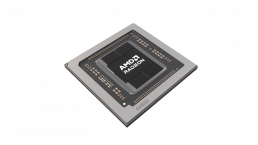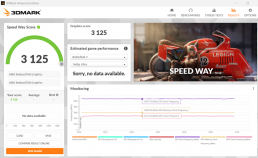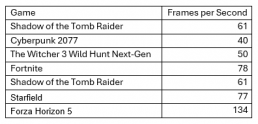IDC Energy Insights' Top 10 Worldwide Utilities Predictions
IDC has just released its annual top 10 predictions for utilities worldwide. The predictions enable the IDC Energy Insights team to reflect on the current year and on what the future holds for the industry. This year, it’s fair to say, there was a lot to think about.
Following a very difficult 2022, characterized by spiraling energy prices from the ongoing Russia-Ukraine War negatively impacting businesses around the world, this year had a more positive note. With receding energy prices, which are still not back to pre-energy-crisis levels and possibly never will, focus returned to long-term initiatives and planning related to the energy transition. According to IDC’s Worldwide Energy Transition Survey (December 2022), almost 60% of organizations globally indicated they were steaming ahead with their energy transition plans, either proceeding at the same pace as before the energy crisis or even accelerating their plans (more than 1 in 10 in the latter case).
Additionally, the extreme weather events of 2023 — including the flooding in Libya and Eastern Africa, the blazing wildfires in Canada and Hawaii, the ice storm in Texas (U.S.), and severe heat waves that once again broke records all around the world — forced the spotlight back on mitigating climate change through decarbonization, electrification, and energy efficiency. Globally, 84% of companies still plan to become carbon neutral by 2040, and just under one-third plan to get there by the end of this decade. However, they admittedly need help as 60% consider their decarbonization plans challenging.
This is a tremendous opportunity for utilities — which have decades-long expertise around electrification, decarbonization, and energy efficiency — to drive the energy transition while growing their own businesses. Additionally, the energy transition, climate disruptions, and social sustainability have demonstrated that utilities are at the heart of economic resilience. Utilities are the only ones with experience managing the critical infrastructure the economy relies on to thrive, and they understand the implications of new disruptive technologies.
By using technology as a lever, electricity, gas, and water companies across the value chain will continuously optimize their operations, processes, and resources, offloading more and more non-core burdensome work, enabling utilities to focus on their core business and pursue new business opportunities. In the year of artificial intelligence (AI) everywhere, utilities have the power to advance further, helping to solve issues around procurement of flexibility, prioritizing connection queues and grid planning, addressing issues around integrated resource planning, and helping to crack more active customer participation, just to name a few.
Given all this, here are the top 10 predictions for utilities:
- In 2024, 45% of frontrunner energy suppliers will leverage generative AI (GenAI) technologies, especially chatbots, to improve customers’ digital journeys, cutting fallback calls to contact centers by over 60%.
- In 2025, 55% of utilities will prioritize supporting customer engagement with personalized energy efficiency and demand response programs, helping customers save 15% on utility bills’ energy component.
- By 2027, 50% of utilities will implement digital twins, improving asset optimization of power grids, decreasing unplanned outages by 30%, and supporting simulations for network expansion.
- By 2025, 60% of electric utilities will have integrated non-wire alternatives in standard planning, deferring up to $7 in system capex for every $1 spent on procuring distributed energy resources (DERs).
- By 2026, 40% of utilities will implement GenAI, improving asset and equipment restoration times by 30% and establishing a knowledge management platform for the next generation of field technicians.
- By 2026, 50% of utilities in advanced markets will invest in advanced distribution management system (ADMS) or distributed energy resources management system (DERMS) to optimize the influx of renewables and DERs coming online, decreasing their carbon footprints by 30% in the long run.
- By 2026, 25% of water distribution companies will have operationalized multispectral satellite imaging and AI-powered computer vision, improving the efficacy of leak detection by a factor of seven.
- By 2028, 35% of integrated electric utilities will offer integrated infrastructure, technology, and energy services for electric vehicle (EV) fleets, helping to accelerate public transport decarbonization.
- In light of escalating hacking incidents, by 2027, 25% of utilities will turn to managed security service providers (MSSPs) for outcome-based services that align security performance with business outcomes.
- Due to shifting regulations requiring greater supply chain transparency and due diligence, by 2026, 60% utilities will invest in environmental, social, and governance (ESG) data platforms to build sustainable supply chains and manage risks.
For each of these predictions, the IDC Energy Insights team has developed a detailed analysis, with associate drivers and IT impact and guidance for utilities (published here).
To complement the top 10 predictions, the IDC Energy Insights analyst team also develops a series of recommendations for utilities that have embarked on the energy transition journey. This year’s recommendations are:
- Deliver on your purpose. Now that immediate issues around security of supply and consumer protection have subsided, it is time for utilities to revamp momentum on long-term net-zero goals. Sustainability, decarbonization, and electrification offer endless opportunities, so focus resources and efforts on energy-transition use cases and initiatives that will support and enrich your company’s future business portfolio.
- Execute and communicate. The utilities industry must grasp the opportunity presented by the energy transition to make a positive impact on the fight against climate change and be recognized for it. Communication and drawing attention to related initiatives is as important as execution to support a change in perception of the utilities industry for the future.
- Prioritize your people. More than ever, companies must prioritize making the most of their workforces, which have an abundance of company and industry knowledge that cannot be lost. With less resources available, companies will need to support their workforces in leveraging the most advanced technologies to optimize operations and drive efficiencies.
- Harness GenAI. Cautiously go beyond the hype to understand how this technology can really support your organization. Liaise with industry peers regarding GenAI use cases, the benefits it brings, and the challenges that emerge. GenAI has the potential to help solve many deep underlying issues the utilities industry has been facing, and it can help utilities move into a new era.
IDC Energy Insights analysts Gaia Gallotti and Daniele Arenga will be onsite in Paris for Enlit 2023. They look forward to meeting you and discussing their predictions and more.
Practical Guidelines: Generative AI Adoption in the Manufacturing Environment
Generative AI (GenAI) attracted significant interest in 2023 and has already begun to impact horizontal and industry applications and use cases. According to our predictions for 2024, it’s anticipated that in 2026, half of G2000 companies will have integrated operational systems with GenAI to better ingest data, identify issues, and provide real-time context to operators, improving efficiency by 5%.
GenAI’s influence on the manufacturing sector is poised to be pivotal. It has already triggered a transition in which AI is omnipresent, no longer an emerging software segment amidst the technological stack.
Numerous firms, including industrial organizations, are assessing how AI can bring value to their operations. They may not have been early adopters of GenAI, but industrial organizations are well-placed to utilize the technology to generate diverse content and conduct extensive research. Algorithms can be trained using existing large data sets to produce text, video, images, even virtual environments.
Download eBook: Generative AI in EMEA: Opportunities, Risks, and Futures
Guidelines to Develop GenAI-powered Use Cases
To help organizations learn from company experiences, successes, and challenges in developing GenAI-powered use cases, I have established some guidelines:
Do Not Underestimate Implementation
GenAI holds a lot of promise, but implementation carries risks that adopters have to watch very carefully. Appropriately trained and utilized, it proves reliable and can be implemented at a reasonable cost. From my perspective, organizations should view GenAI-powered solutions as an integral part of a digitally enabled strategy, particularly in fields like asset maintenance.
It’s essential to meticulously plan each phase of the solution’s implementation journey. The desired goals should be outlined, and key performance indicators should be identified. Regarding ROI, the total cost of ownership should be accounted for, including OPEX.
During the planning stages, organizations should project how the solution will scale and integrate with existing IT systems (especially in terms of technology standards). Organizations should also not undervalue the importance of the post-implementation period. Establishing review cycles with technology partners is crucial to ensure that user feedback is appropriately addressed. Finally, organizations should engage in discussions with experts who can provide insights into other areas that could benefit from GenAI solutions.
Expand on Technology Partnerships
I recommend that organizations forge partnerships with technology providers and establish trusted relationships that foster the sharing of goals, capabilities, and values. A collaborative approach enables organizations to expedite and expand innovation. Due to the potentially lengthy journey from proof of concept to implementing company-wide solutions, organizations should ensure that their partners are capable of delivering scalable solutions and offering guidance throughout the implementation process.
When constructing a private and secure GenAI environment, organizations should consider technology partners capable of transferring internal data into large language models (LLMs) securely and without loss. Such partners can also facilitate knowledge transfers to internal staff for ongoing management and proficiency.
Keep Security in Mind
Organizations should be on guard against potential data leaks and biases, while also retaining control over the IT processes operating in the background. It is vital to establish a governance mechanism to tackle concerns related to privacy, manipulation, biases, security, transparency, disparities, and potential workforce displacement.
I suggest actively participating in specialized drills aimed at mitigating the risk of sophisticated phishing attacks. Organizations can also enhance data security by updating their data infrastructures to meet the expanding data requirements of GenAI models.
Be Creative in Finding New Use Cases
Organizations should prioritize using AI to deliver value and enhance business outcomes; AI should not be pursued for its own sake. The decision-making process regarding ROI involves various parameters. Early adopters have suggested focusing on one of the most critical aspects: the strategic fit of the investment. A fundamental approach is to give priority to initiatives that offer the most beneficial outcomes but require the least effort. Based on the experiences of GenAI adopters, I support adopting an agile methodology and the minimum viable product (MVP) strategy, which should prevent investment in non-value-added projects.
In a recent interview with an end user, it was revealed that 100+ potential use cases were identified during GenAI ideation workshops. Of these, two have already been launched as MVPs, and 14 are in active development.
Watch the Webcast: Generative AI in EMEA: Opportunities, Risks, and Futures
Conclusion
GenAI solutions are transforming manufacturing operations, improving efficiency, facilitating data-driven decision-making, and simplifying complex processes for frontline workers. By implementing these innovative practices, organizations can adapt to the changing manufacturing landscape and significantly enhance operations.
Our research indicates that the adoption of GenAI by manufacturing organizations is still in the early stages. However, there has been a notable increase in GenAI awareness: IDC’s July 2023 Future Enterprise Resiliency and Spending Survey revealed that just 19% of manufacturing organizations were unaware of GenAI, compared to 35% in March 2023. This trend suggests that GenAI is steadily being integrated into the technology frameworks of organizations, putting them on an innovation trajectory.
To explore more of our coverage on Gen AI, visit our dedicated page.
Review of the AMD Radeon RX 7800 XT and Radeon RX 7700 XT Midrange, Enthusiast-Class Graphics Cards
In September 2023, two and a half years after the launch of the Radeon RX 6700 XT and Radeon RX 6800 XT, AMD introduced two new GPUs to round out its new RDNA 3-based graphic card portfolio: the midrange Radeon RX 7700 XT and high-end Radeon RX 7800 XT. AMD also published the most recent version of AMD Software: Adrenalin Edition, which introduced AMD HYPR-RX and FidelityFX Super Resolution 3 (FSR 3) with frame generation technologies. In addition, AMD released a technical preview driver that allows all DirectX 11 and DirectX 12 games to benefit from Fluid Motion Frames, a frame generation technology.
The 12 GB AMD Radeon RX 7700 XT and 16 GB Radeon RX 7800 XT graphics cards are equipped with second-generation AMD Infinity Cache technology and are based on the groundbreaking AMD RDNA 3 architecture. They offer 1440p high refresh rate gaming experiences with good performance at reasonable prices.
The AMD Radeon RX 7800 XT and 7700 XT graphics cards, which have suggested etail prices of $449 and $499, respectively, went on sale from September 6, 2023. For this review, we installed sample AMD cards in two systems, each with a Ryzen 9 7950X CPU, a Gigabyte X670E Aorus Master motherboard, and a G.SKILL Trident Z5 Neo 2x16GB DDR5-6000 EXPO memory kit.
Architecture
RDNA 3
The Radeon RX 7700 XT and RX 7800 XT respectively have 54 and 60 unified AMD RDNA 3 compute units. These new cards are built on the RDNA 3 architecture, which include new Infinity Cache technology, AI accelerators, and second-generation raytracing accelerators. The AMD Radiance Display Engine, with DisplayPort 2.1 support for high refresh rate displays, is also incorporated into the new cards.
2nd Generation AMD Infinity Cache
The new cache hierarchy balance has been optimized for the ideal mix of 2nd Generation Infinity Cache and L2 cache to allow fast data access and act as a significant bandwidth amplifier despite being half the size of the RDNA 2-based GPUs. The new cards thus have better performance and are more power efficient than previous models.
Media Engine
Like the previously announced RDNA 3-based GPUs, the new media engines on the Radeon RX 7700 XT and RX 7800 XT have hardware-accelerated support for AV1 encoding up to 8K resolution at 60 frames per second (FPS). It is now possible to produce output videos at smaller file sizes while maintaining the same bitrate and quality. The current versions of OBS, DaVinci Resolve, and Adobe Premiere Pro, with the Voudoker plug-in, all have support for AMD RDNA 3 Media Engine AV1 encoding. Support for FFmpeg and Handbrake encoding will be introduced in future.
Game Bundles
AMD continues to offer newly released AAA gaming titles alongside its launch of new products and seasonal promotions. AMD is the exclusive PC partner for Starfield, Bethesda Game Studios’ new open world game in almost 25 years. Starfield was created by the award-winning designers of The Elder Scrolls V: Skyrim and Fallout 4. The Radeon RX 7800 XT and Radeon RX 7700 XT, as well as qualifying Radeon + Ryzen PCs offered with these graphics cards, are eligible for the Starfield Premium Edition package, which provides gamers with free access to the game.
Adrenalin Software
The latest AMD Adrenalin Edition driver update adds additional performance and feature upgrades. The new HYPR-RX and AMD Radeon Anti-Lag+ technologies allow for next-generation gaming experiences on AMD Radeon RX 7000 Series GPUs.
To produce a performance-stacking effect, the AMD HYPR-RX technology streamlines and handles the simultaneous interoperation of AMD Radeon Super Resolution, Radeon Anti-Lag, Radeon Anti-Lag+, and Radeon Boost. AMD Radeon Anti-Lag+ allows players to reduce input latency. However, AMD encountered a problem with Anti-Lag+ along with some anti-cheating technologies used in multiplayer games. This problem prompted the company to release the AMD Software: Adrenalin Edition 23.10.2 driver, which disables Anti-Lag+ technology in all supported games. AMD now advises gamers to use the new driver. AMD also stated that it is actively working with game developers on a solution to re-enable Anti-Lag+ and reinstate gamers who have been affected by anti-cheat restrictions.
Performance
Scale-Up
Because it employs DirectX 12 Ultimate Raytracing tier 1.1 for real-time global illumination and raytraced reflections as well as new performance enhancements such as Mesh Shaders, 3Dmark Speed Way is an ideal synthetic benchmark for comparing the performance of the latest AMD graphics cards with their predecessors.
The Radeon RX 7700 XT represents a great generational jump over the RX 6700 XT. However, the RX 7800 XT did not scale up against the RX 6800 XT, as the additional 12 compute units of the RX 6800XT compensate for the new architecture with quicker memory.
Ultra-Wide 1440p Gaming with Radeon RX 7700 XT
Games were tested on a 34-inch ultra-wide quad-HD 1440p monitor with a 144Hz frame rate, FreeSync, and 10-bit colors. We utilized the games’ maximum graphics settings, with ultra raytracing, FSR, and HYPR-RX enabled.
In the Forspoken demo, AMD FSR 3 was put to the test with the Radeon RX 7700 XT. The average FPS jumped from 55 to 96. During gaming, there was no latency or stuttering.
Gaming in 4K with Radeon RX 7800 XT
The Radeon RX 7800 XT was tested at 4K resolution and maximum graphical settings, with ultra raytracing enabled were possible. In a demanding game like Microsoft Flight Simulator 2020, with the FlyByWire A32NX and the Terrain LoD set to 400, the AMD Radeon RX 7800 XT had an average FPS of 41 and a one percentile low frame rate of 35 FPS for a smooth and predictable experience in the cockpit.
Flight Simulator 2020 is an ideal game for the technical preview driver with AMD Fluid Motion Frames, as the simulator is quite CPU bound when to playing on ultra settings. Limiting the FPS to 30 with RivaTuner Statistics Server and enabling Fluid Motion Frames resulted in a smooth 60 FPS experience, even over highly detailed areas such as New York or London.
With the typical slow and smooth scenery movements from the cockpit view, Fluid Motion Frames technology consistently generated additional in-between frames for a great flight sim experience.
Starfield achieved an average 42 FPS at 4K ultra settings on the AMD Radeon RX 7800 XT without resolution scaling. However, the FPS dropped significantly in built-up areas within the game. Game performance improved when the settings were lowered, with an average 50 FPS recorded at high settings. AMD Fluid Motion Frames can be enabled for Starfield with the technical preview driver. While Fluid Motion Frames help smooth some areas of the game, processing can temporarily stop when there are rapid direction changes during gameplay. This effect results in an FPS drop and stuttering, just when a gamer needs additional frames to smooth out motion. Improving this capability of Fluid Motion Frames in the driver will really improve the overall experience and make RDNA 3 and RDNA 2-based cards much more usable over time, especially as more demanding games come to market.
IDC Opinion and Conclusion
The RX 7700 XT, which is $30 less than the RX 6700 XT at launch (at $449), nonetheless has a noticeable increase in performance. The RX 7700 XT outperforms the previous generation in raytracing games, with up to 40% better performance. With the Radeon RX 6700 XT, playing demanding games like Cyberpunk 2077 at maximum visual settings was impractical. An average 27 FPS was recorded with ultra raytracing enabled on an ultrawide 1440p monitor. In contrast, the RX 7700 XT’s 12GB of VRAM did not pose any restrictions at 1440p. The card is a worthwhile improvement and will become more popular should a price decrease be effected in future.
The AMD Radeon RX 7800 XT is a bit more of a complex proposition for a consumer. The AMD RX 6800 XT’s suggested retail price at launch was $649, while the RX 7800 XT costs $499. With fewer but higher performing compute units, the Radeon RX 7800 XT performs broadly at par with the Radeon RX 6800 XT, but costs 25% less compared to the latter’s original launch price. The card thus represents much better value, especially as the stock of end-of-life RDNA 2-based GPUs dries up.
AMD has definitely read the market and is taking competition in the midrange gaming market seriously, as evidenced by the lower launch prices of its new cards. Due to market demand, AMD will likely reduce the suggested price of the RX 7700 XT even more in the near term, given the small $50 (10%) price difference between it and the RX 7800 XT and the much greater overall performance of the RX 7800 XT.
Cloud Native App Delivery: Progress is Made, But Optimization Is Hard
What is Cloud Native?
Before diving into the topic, we need to provide some context as to what we define here as Cloud Native. A very salient question jumping almost immediately in our Cloud Native conversations is what exactly it is, what are the components that make up or not Cloud Native.
We obviously recognize that this has been a very quickly evolving topic, and depending on who you talk to, you may have different interpretations as to what comes into the composition of Cloud Native. In recent years, new technologies have gained acceptance and consumption – especially among born-in-the-cloud companies and vendors – and that can complicate discussions.
However, for us, the intersection of containers, containers orchestration (largely Kubernetes), microservices and DevOps forms the foundation to consider an application cloud native.
What’s the State of Adoption?
Today, 57% of the organizations in Europe recognize they have less than a quarter of their custom apps running in a cloud environment as Cloud Native. Further, an additional 19% of organizations have between 25 and 34% of their custom apps running in a cloud environment as Cloud Native.
So vastly, three quarters of organizations in Europe remain in the early phases of technical maturity for their cloud native app estates. Nonetheless, the ambitions for adoption are very high, whereby towards the end of 2024, 44% of organizations indicate they will have over a third of their app workloads cloud native – compared to just 25% today.
We have been gauging the appetite for cloud native application transformation for the past 3 years and every year we observe a high desire to evolve app estates to cloud native very quickly. But also, every year after, we measure different realities compared to previous year’s aspirations – where the main observation is that driving cloud native is hard.
Cloud Native is hard not just technically, but also at a higher level – at organizational and cultural level.
Looking at Cloud Native through that lens, it’s 40% of organizations in Europe that have refined and standardized their Cloud Native processes across their entire chain of activities. Yet it’s only a quarter of these more advanced organizations – or 11% of the total market – that managed to infuse continuous improvement loops in.
Those businesses are the ones that are truly reaping the benefits of Cloud Native at scale – and that typically disrupt into the rest of the market through their app delivery engines. However, progressing to this Cloud Native maturity model is a steep incline, it requires efforts and commitment from many parts of the organization and from stakeholders at the higher levels of the corporate pyramid.
Key challenges with Cloud Native
Architectural complexity is something that needs to be recognized in Cloud Native environments. Everything becomes multidimensional, highly dynamic, and transient.
There are many moving parts and the pace at which they come and go can be challenging for teams that have been working in a very linear fashion.
This cascades into challenges related to skills, automation, working in lockstep with other teams/cultural, meeting regulatory compliance, ensuring security is robust, managing technical, driving adequate observability, etc.
We see specific organizational functions being affected by such challenges to varying degrees, depending on the role they carry and the placement in the value chain. The challenges in a Cloud Native environment must be understood from the vantage point of each team/organizational function.
Considerations for Moving Forward with Cloud Native
We see that app delivery platforms, as engines for Cloud Native delivery, receive unflattering reviews in terms of satisfaction from developers. One in two developers give lukewarm assessments to the internal developer platforms they are provided.
Furthermore, one in two organizations recognizes that shadow application development happens outside their designated app development and delivery platforms.
To excite developers and drive deeper purposes for platform engineering teams, organizations need to improve their developer experience. As per IDC’s 2023 survey, unifying developer experience is viewed as the best strategy to improve performance and productivity across development teams and activities.
Developer experience becomes particularly important in a Cloud Native context, as technical, process and organizational complexity surge in Cloud Native environments.
Streamlining developer workflows brings incalculable benefits into the business, ranging from compliance to a foundation for architectural consistency, including benefits at financial level long term (e.g. standardization of apps, containment of technical drift and better management of technical debt).
Further, looking at Cloud Native from a strategic perspective, the role and importance of architecture cannot be overemphasized. IDC’s 2023 Modern App Delivery survey shows that Cloud Native is a top area that needs to be prioritized from a system design/architecture perspective over the next 12 months.
However, poor architectural decisions can be very consequential and lead to suboptimal digital landscapes, including at the level of technical debt, security, scalability and operating cost.
If you’d like to find out more about IDC’s research around Cloud Native in Europe, please contact George Mironescu, lead for IDC’s European Cloud Native and Modern App Development Strategies research program.



















